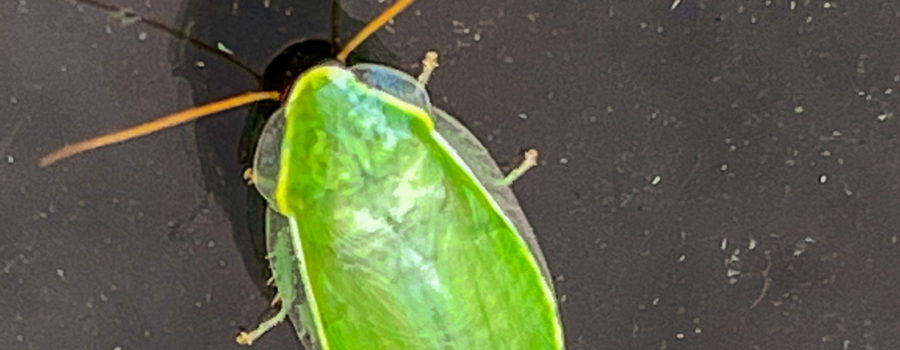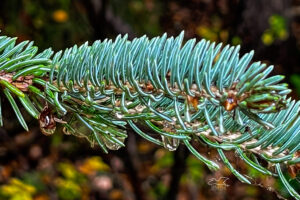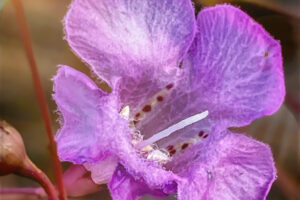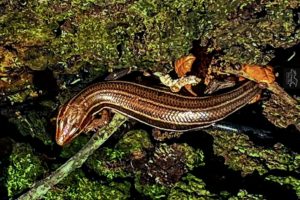The Cuban Cockroach is a Good and Attractive Insect

Is there such a thing as a good cockroach? That’s definitely a loaded question! But if there is such a thing, this guy would be it. You do have to admit it is kind of a pretty little thing, being a similar shade of green to the giant Katydid and the cloudless sulfur butterfly. So what is it? It’s a Cuban cockroach, also known as a banana cockroach or a green banana cockroach. They are actually native to Cuba and several other Caribbean islands, but have become established in the southeastern United States. It is believed that they came to the US by accident, probably in shipments of bananas and other fruit. They now can be found mainly along the gulf coast from Florida to Texas with a few colonies in various other states.

These cockroaches break a lot of the “rules” that most cockroaches follow. We’ve already seen one example of that. Did you know that the American cockroach is not actually native to the Americas and neither is the German cockroach native to Germany? The Cuban cockroaches really are native to Cuba, though! And they break the rules in several other ways, too. The most obvious is their color. Most roaches are brown to dark brown, sometimes with a reddish or orangish tint, but only Cuban cockroaches are green. It should be noted, though that their nymphs are dark brown and look much more like a “normal” roach. The nymphs stay brown for approximately their first 100 days of life. At that point, they begin to develop their wings and turn that nice leafy shade of green.

These roaches also reproduce differently from all the others. Most female cockroaches produce an egg case that contains a number of fertilized eggs inside. She incubates these eggs inside her abdomen until they are close to hatching, at which point she expels the egg case. Cuban cockroaches actually retain their egg cases and it is the live nymphs that are finally expelled. As stated earlier, those nymphs are dark brown, and they are very small and flightless. They finish their development in leaf debris, under fallen logs, or in mulch. Once they develop their wings and their green color, these insects become very powerful fliers which allows them to reach the tops of trees and easily move from tree to tree. Although a number of other roach species can fly, none are strong fliers, which is another characteristic that sets Cuban cockroaches apart from others.

At least to people, probably the most important way that these cockroaches differ from others is that they don’t like to be indoors. They will occasionally fly into homes since they are strongly attracted to lights, but they can’t reproduce or colonize homes and offices like other types of roaches. They much prefer to be outside. And since when outdoors, they like to live in tree tops, except for the occasional accidental indoor flight, they rarely bother humans. They do have an appetite for fruit, and can occasionally cause damage to bananas and banana trees if they occur in large numbers, but even that is pretty rare. Being pretty innocuous insects, some people even keep these guys as pets in terrariums. I would say, who would keep a roach as a pet, but I happen to be friends with one collector who has several types of roaches as pets, including some of the Cuban variety! She actually breeds them for both the pet trade and for people who use them to feed to pet reptiles and amphibians (these roaches have a softer body than others, so they make good feeder insects). So as you can see, at least as cockroaches go, Cuban cockroaches, aren’t so bad. I personally have no desire to keep them as pets, but I don’t mind having them around…outside!

If you like beautiful nature photography and artwork along with interesting and entertaining content, give our blog a try! Just sign up below!





Recent Comments